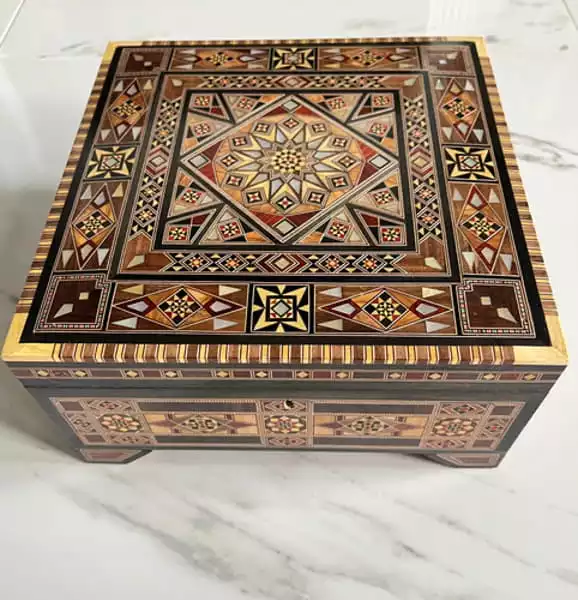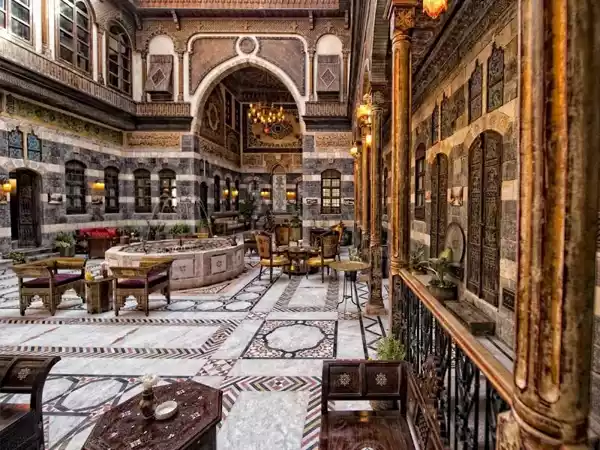Mosaic art: the history of mosaic craft in Syria
Despite the decline in its production in Damascus and Syria due to the war, it was able to establish a presence in other countries such as Turkey and Jordan, moving with its mosaic craftsmen, most of whom are Damascene, who are the original people of the mosaic craft.
What are the largest neighborhoods in which mosaic workshops are located in Syria?

Jobar neighborhood was the largest area with workshops and shops selling mosaics in Damascus.
Many stores have been located in this area since the fifties of the last century
However, the conditions of war and displacement have changed this situation, as the Jobar neighborhood has been subjected to violent battles between the opposition factions and the Syrian regime forces, over the past years, which led to widespread destruction of its buildings.
What happened to mosaic workshops after Syrian civil war
After that, the workshops and exhibitions moved to the city of Jaramana, which was also famous for the turnout of mosaic craftsmen to learn the mosaic industry at the hands of ancient Damascene teachers.
Who started mosaic art?

Mosaic is considered a special art in Damascus, and it was Jerji al-Bitar or the one who invented this industry, according to what was mentioned in the history books of the city of Damascus.
When did he made his first mosaic piece

Al-Bitar made the first mosaic piece in 1860, by collecting strips of naturally colored wood of triangular or square cross-section, then cutting them in the form of chips and gluing them to the wooden crafts with natural glue.
Why this craft is important in Damascus?
This profession is of great importance, as it has a heritage confined to Damascus only, as it is not circulated much in other countries. However, during the war period, some mosaic craftsmen were forced to transfer their workshops to Turkey, relying on the sale of goods through a foreign market.
Woodwork on mosaic
Making mosaic pieces depends on colored wood that is later fed with mother of pearl and pearls, whether natural or artificial. Creativity in this craft has an important role, as it takes an engineering character in its forms, mosaic is a very wide field, and it is natural that it becomes with practice like any ordinary mosaic craft, but Love of work and creativity in it remains the main factor
What are the types of inlay on wood?
Several types of wood are used in the manufacture of the “mosaic” piece, which is a municipal wood that is available in Syria and does not need to be imported, such as walnut, lemon, olive and eucalyptus, according to Mustafa.

These pieces are made with geometric shapes and with high precision that only Ibn Al-Maslah can master. Syrian mosaic craft differs from other professions in that it is characterized by smoothness and polishing, as devices play an essential role in the manufacturing process.
Each piece has its own path of work and its own unique art, according to the drawings in it.
It takes every hundred pieces of a medium-sized wood box, for example, which is called “Khaskar” (every hundred pieces) to be ready for display and sale from 15 to 20 days, if labor is available.
Concerning the imported raw materials, the mosaic craftsmen pointed out that the seashell that enters the final stages of wood inlaying comes from abroad, and it has become difficult to import it because of its monopoly by traders and its high prices.
Where import prices were acceptable before, but now they are expensive (high), due to the economic conditions, and among the basics of raw materials there are types of plastic such as granules, and a type of shell called (Rahaj seashell)



